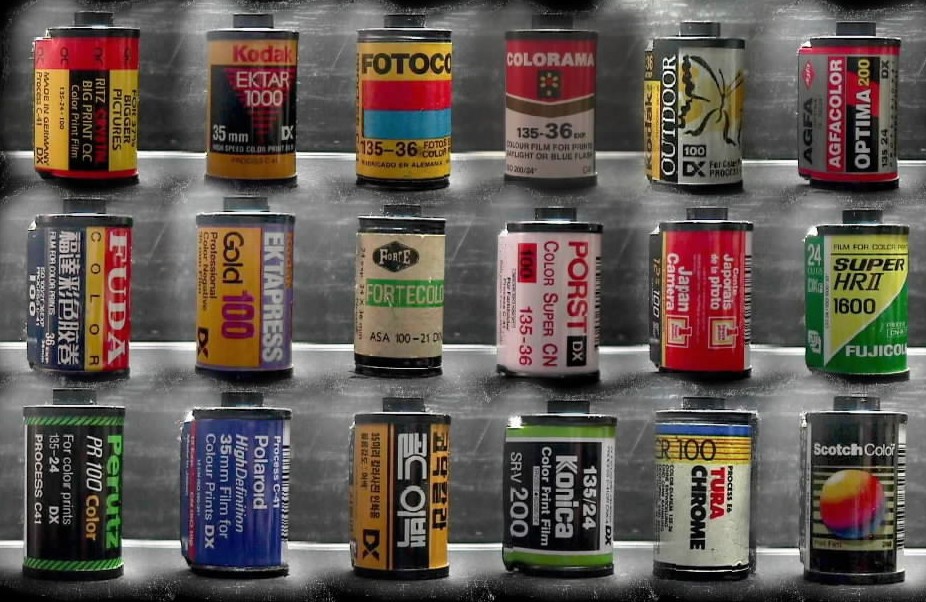 I’ve read a lot of stuff about photography lately. One argument that keeps popping up, especially with older photographers, is that they prefer traditional film cameras to modern digital cameras. What reasons do they come up with for this? Although some prefer the colours and grainy feel of older photos, most reasons boil down to some sort of nostalgia factor. Those of you below a certain age threshold may not have used or even seen a film camera. So what is all the fuss about?
I’ve read a lot of stuff about photography lately. One argument that keeps popping up, especially with older photographers, is that they prefer traditional film cameras to modern digital cameras. What reasons do they come up with for this? Although some prefer the colours and grainy feel of older photos, most reasons boil down to some sort of nostalgia factor. Those of you below a certain age threshold may not have used or even seen a film camera. So what is all the fuss about?
It’s difficult to deny the superiority and convenience of digital cameras in objective terms. Although there are certainly cases where film cameras produce more detailed images (e.g. medium and large format film formats), your average modern digital camera has more or less surpassed 35mm film cameras in terms of image quality. Estimates for the megapixel equivalent of an average 35mm film image range from about 8MP to 12MP. Noise under low light conditions is no contest. A film would be fixed to a sensitivity level (ISO) whereas digital sensors can emulate various levels of light sensitivity at the touch of a button. The cost of digital is far lower due to the fact that you don’t have to develop your pictures, and current memory card capacities allow you to take hundreds or thousands of photos at minimal expense. If one prefers the colour balance of a specific film camera and a film type, this can be achieved using post-processing using something like Photoshop on a computer. Though I’m aware I’ve probably missed other possible arguments, there isn’t much contest when all things are considered. But you already knew most of this, I’m sure.
But what about the nostalgia factor? What about the subjective reasons that people prefer film cameras? Well, a pure preference is a pure preference. Some might like to develop the film themselves, others may like the sound of a film winding or miss the physical act of changing rolls.
However, some of these preferences are actually linked to a desire for behavioural nudging. As I explored in my article about Super Mario 3D World, there are situations where we want to limit our range of choices, at least superficially, in order to steer us into making a choice that benefits our longer term happiness. How does this link to photography? Well, one of the common themes that I’ve seen raised, especially by professionals who started out using film, is that film cameras force you to think in a different way about taking photos.
For example, in the above (highly entertaining) video, Mark points out to Kai that his checking of the image on the LCD screen of his digital camera after taking the photo represents ‘insecurity’. In other words, he is arguing that because film cameras forced you to think about the composition and exposure before you pressed the shutter (at risk of wasting one of your precious 20 or 30 odd frames!), you learnt how to be more efficient and knowledgeable. I’ve seen this kind of argument echoed around the internet. The other implication might be that one might spend too long dwelling on a shot and miss something else.
I like this example in particular because it is pretty much a ‘pure’ nudge. There is no reason why you cannot choose to compose images properly on digital cameras before taking photos. If you wanted to limit yourself to a small number of photos to try to increase your creativity, you can choose to use a smaller memory card. You can choose not to review photos that you’ve taken, at least until you have gotten back home. So a digital camera expands the choice set that a film camera gave you. However, like the Mario example, sometimes the convenience of these additional options actually brings you short term gratification at the expense of the longer term utility you might get if you had been forced to learn how to become a better photographer.
Should you get a film camera in order to learn how to take better pictures? I don’t think so. We know that more choice is theoretically better, and artificially restricting the set of options harms those people that would have benefited from choosing them. Will checking the odd picture on your screen make you a worse photographer? Of course not. But, as the behavioural economics nudging literature suggests, some form of ‘hand-holding’ may be useful in order to guide people to a certain option without forcing it down their throat.
I’m sure similar things already exist in some cameras, but how about a training mode that sets you shooting challenges in order to increase your awareness of photography concepts? How about having a small amount of internal memory, or a smaller memory card supplied so that people can start out taking pictures, but are limited to a small number unless they pay more money? How about turning off image playback as a default option? Unfortunately, I am no expert on photography. But if you are an experienced photographer, I bet you can come up with some similar guidelines for digital cameras that you think would help people to think more before shooting.
My most important message here is that people often want to increase a choice set because it is objectively better to do so. Other people have recognised, however, that due to human nature, reduced choice sets can make us better off. But we don’t want to negate progression or reduce liberty. Hence, behavioural nudges are often a good ‘best of both worlds’ solution to decision problems.

